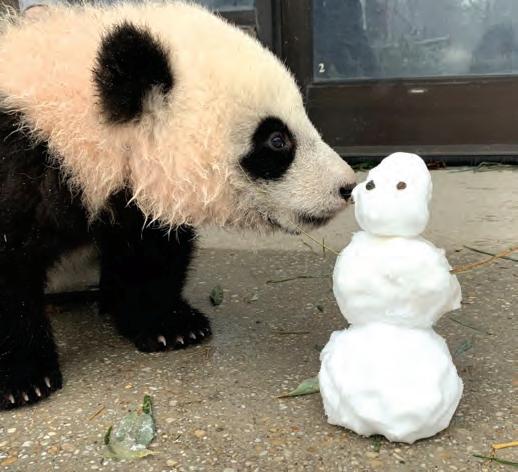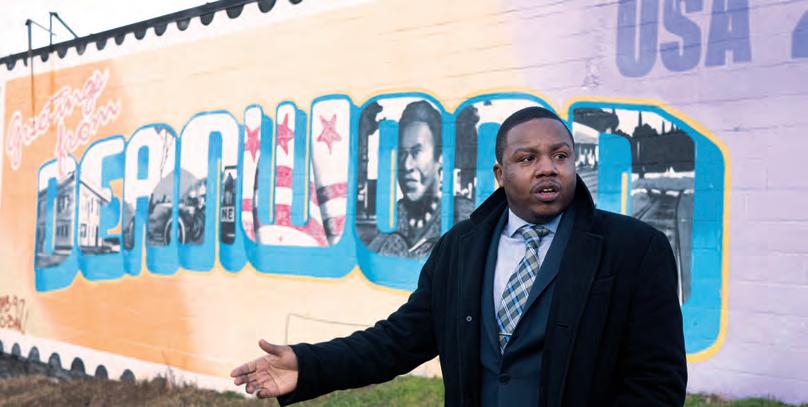east washington life
Zsudayka Nzinga
Artist, Curator, Educator and Community Leader by Phil Hutinet
The Way Forward to DC
Born and raised in Denver Colorado, people thought Zsudayka Nzinga, was nuts when she told people in middle school that she wanted to move to DC to become a famous artist. Yet it seems that she is on track to prove her critics wrong. Nzinga attended Hampton University, an HBCU (Historically Black College and University) in Virginia with the intention of studying journalism. During her freshman year, right after the attacks of September 11, she visited DC for the first time attending a seminar at Howard University for budding journalists organized by Hampton University. Nzinga reveals that it was at this moment, “when I first came to DC, I knew I had found home.” Before getting married to Ward 7 native James Terrell and planting roots in Deanwood, Nzinga moved around a between Denver and Virginia by way of New York City and Atlanta, Georgia. While these moves reaffirmed her desire to become a Washingtonian, at Hampton, she had chosen
In the Gallery: Zsudayka Nzinga. Photo: Joseph Chisley
32
E a s t o f t h e R i v er D C N e w s . c o m
not to enter the field of journalism. Instead, she chose a path that would lead to a career in the arts. While her artistic practice currently focuses mostly on painting and mixed-media work, Nzinga still maintains a reverence for poetry and spoken word.
Pandemic Process Shift
The effects of the pandemic have had varying impacts on all of us. For artists around the world, the experience has led to creating work that evokes themes of solitude and isolation. In Nzinga’s case, the pandemic has changed the manner in which she explores being a Black woman in America, a central theme in her work. With two small children and a preteen to raise, before the pandemic, Nzinga would “get to paint in spurts.” However, when schools closed, her husband, who teaches art, stayed home. This gave Nzinga the opportunity to work a couple of hours at a time. The increase in time allowed Nzinga to delve into collage, using fabric and employing diasporic themes such as braiding hair and textiles. For example, she has been learning about the practice of braiding maps into women’s hair so that they wouldn’t get lost. She has also been thinking about how textiles serve as maps to indicate people’s origins. As her process and use of materials evolved over the past ten months, Nzinga delved deeper into her identity. “I began thinking about [the order of words] American African vs. African American and embracing my identity as an American.” Nzinga sees her American identity as prime while simultaneously acknowledging her African roots and comparing it to how other American groups like Italians talk about their cultural identity through food, culture or religious practices. She further elaborates that “When the hashtag #blackartmatters appeared [over the summer of 2020], it started an interesting discussion of who is an American. As Black artists, we have our own aesthetic but it is an American one.” Nzinga believes that “Art is good because it’s a way to communicate culture without being aggressive. “ As a figurative painter, one of the difficulties Nzinga experiences from isolation is being disconnected from other people and the encounters which pro-
Zsudayka Nzinga “Breastfeeding 2”. Photo: Joseph Chisley
vide her with inspiration. “People are my inspiration,” she explains. Her recent work has also addresses the paradox of “watching children playing peacefully at home while watching cities burn on TV.” With parental responsibilities, Nzinga understands that “I am not on the front lines [of the social justice protests] and my work is reflective of that.” So, she has sought to “dig deep politically” to understand how she, as an artist, can contribute to social justice and equity through her work as an artist, curator, educator and community organizer.
DC School Teacher Art Exhibition
Nzinga and her husband strongly believe in the importance of engaging young people in art at an early age. She writes curricula for children’s art programs and seeks to provide





